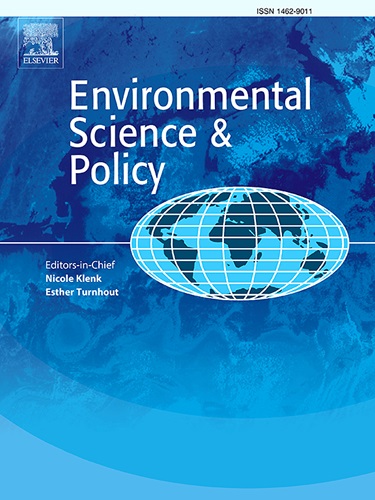跨学科合作中知识整合的概念框架
IF 5.2
2区 环境科学与生态学
Q1 ENVIRONMENTAL SCIENCES
引用次数: 0
摘要
本文综合了三个领域的文献,构建了一个跨学科和跨部门合作中知识整合的概念框架:(1)跨学科和跨学科的研究,(2)可持续性研究中的知识共同生产的研究,(3)团队科学领域的知识整合影响因素的研究。结合范围评估方法和被引文献检索方法,我们确定了知识整合的八个维度:整合的知识类型、实践知识整合所需的能力和教育、组织结构、行动者参与的类型、协作阶段、背景因素、知识整合的过程和机制,以及知识整合的结果类型。我们在协作的四个相互关联的组成部分中构建这些维度:知识收集(输入)、结构动力学和协作动力学(过程)以及综合结果(输出)。我们确定了在跨学科合作中调动的不同类型的知识——认识论、经验、语境、文化、应用、专业、系统性变革知识和规范性知识——并将它们与跨学科团队的结构特征(例如,团队组成、治理)和协作动态(例如,利益相关者参与、互动频率和角色)联系起来,这些特征会影响知识整合的过程和结果。这个框架的目的是作为一个启发式的功能,提示团队将其适应特定的上下文、项目和团队配置。它还可以作为设计和评估不同协作环境中的知识集成工作的框架。本文章由计算机程序翻译,如有差异,请以英文原文为准。
A conceptual framework for knowledge integration in cross-disciplinary collaborations
This paper synthesizes three domains of literature to develop a conceptual framework for knowledge integration in cross-disciplinary and cross-sectoral collaborations: (1) studies of inter- and transdisciplinarity, (2) studies of knowledge co-production in sustainability research, and (3) studies focusing on factors influencing knowledge integration in the Science of Team Science field. Combining a scoping review methodology with a cited reference search approach, we identify eight dimensions of knowledge integration: types of knowledge integrated, competencies and education required to practice knowledge integration, organizational structure, types of actor involvement, stages of collaboration, contextual factors, processes and mechanisms of knowledge integration, and types of knowledge integration outcomes. We structure these dimensions across four interconnected components of collaboration: knowledge gathering (inputs), structural dynamics and collaborative dynamics (processes), and integrative outcomes (outputs). We identify the different types of knowledge mobilized in cross-disciplinary collaborations – epistemic, experiential, contextual, cultural, applied, specialized, knowledge for systemic change, and normative knowledge - and link them to the structural features (e.g., team composition, governance) and collaborative dynamics (e.g., stakeholder engagement, interaction frequency, and roles) of cross-disciplinary teams that influence the processes and outcomes of knowledge integration. This framework is intended to function as a heuristic to prompt teams to adapt it to specific contexts, projects, and team configurations. It can also be used a scaffold for designing and evaluating knowledge integration efforts in diverse collaborative settings.
求助全文
通过发布文献求助,成功后即可免费获取论文全文。
去求助
来源期刊

Environmental Science & Policy
环境科学-环境科学
CiteScore
10.90
自引率
8.30%
发文量
332
审稿时长
68 days
期刊介绍:
Environmental Science & Policy promotes communication among government, business and industry, academia, and non-governmental organisations who are instrumental in the solution of environmental problems. It also seeks to advance interdisciplinary research of policy relevance on environmental issues such as climate change, biodiversity, environmental pollution and wastes, renewable and non-renewable natural resources, sustainability, and the interactions among these issues. The journal emphasises the linkages between these environmental issues and social and economic issues such as production, transport, consumption, growth, demographic changes, well-being, and health. However, the subject coverage will not be restricted to these issues and the introduction of new dimensions will be encouraged.
 求助内容:
求助内容: 应助结果提醒方式:
应助结果提醒方式:


